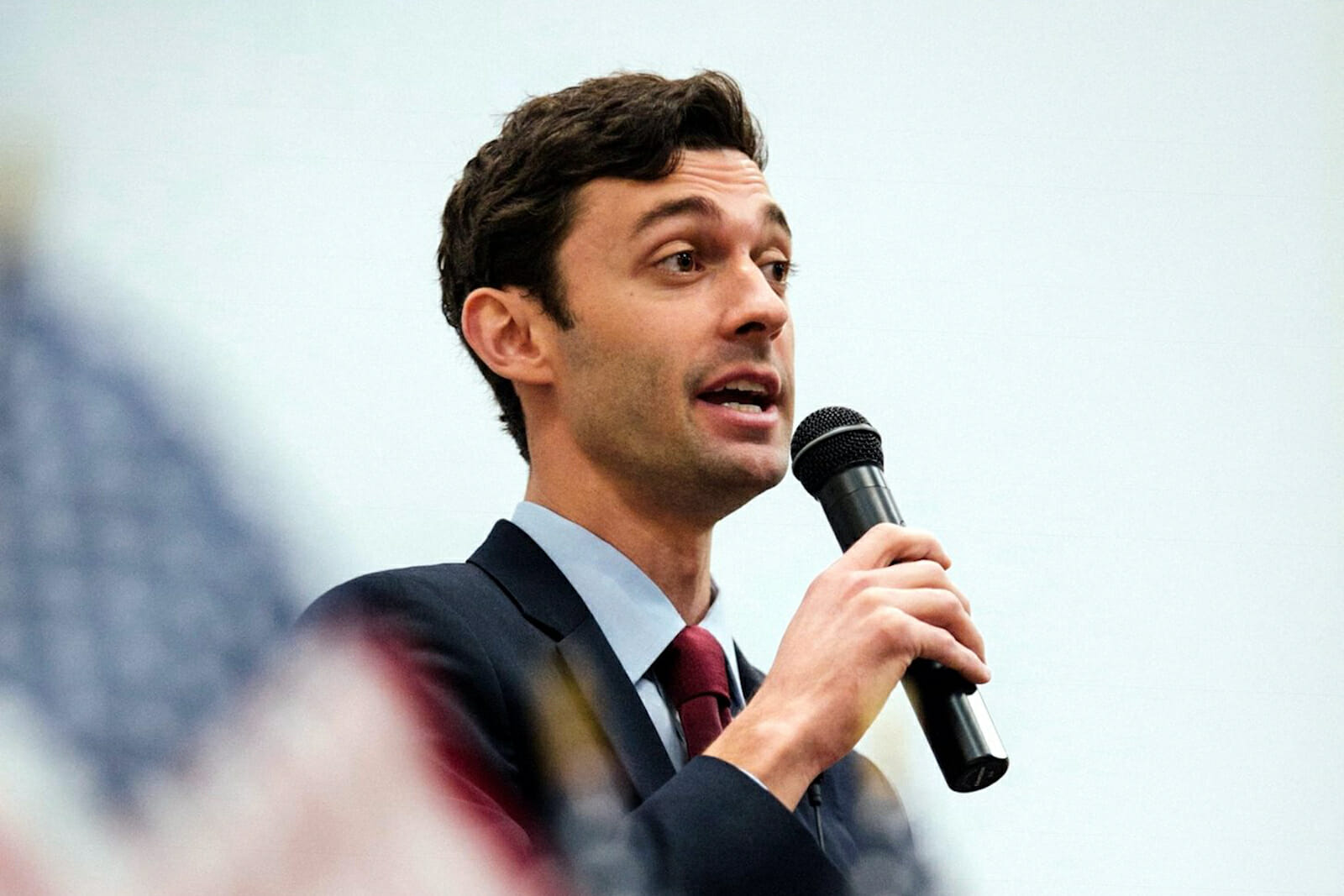
Politics
The Democrats’ Black Knight Problem
For the past six months or so, the leaders of the Democratic Party have carried themselves with a certain haughty arrogance. The kind of quiet confidence about the political headwinds that is typically reserved for parties that have made huge electoral gains and who believe that they can now set the terms by which future elections are fought.
Of course, this is not the reality facing party leaders. In reality, the Democratic Party has suffered catastrophic losses of nearly 1,000 seats at the local, state and federal level in the last eight years. These losses presaged a deep and profound disconnect between the way leadership views the Democratic brand and the way it is perceived throughout the rest of the country, culminating in the stunning election of Donald Trump despite his historic unpopularity.
Since November, this string of political defeats has more or less continued unabated in a series of special elections, with Georgia’s sixth district as the most recent example. The losing campaign fought by the Democrat, Jon Ossoff, is just the latest sign of how the party has learned virtually nothing despite being completely and totally shut out of power.
Caveats abound: every special election is unique, all of the special elections have been in deeply Republican districts, Republicans have had to spend tens of millions to defend seats that were locks in previous elections and in all cases the Democratic candidate outperformed past candidates of the same party.
However, if all the above is true, it is also true that – in this cycle and this political climate – the Georgia special election was eminently winnable and the Democrats once again managed to botch things.
It’s true that Montana’s at-large district and Georgia’s sixth district are solid bastions of conservatism which reliably vote red; it’s also true that the Republicans ran exceptionally poor candidates in these races, with one literally committing assault the day before the election and the other blurting out the words “I do not support a livable wage” in a closely-watched televised debate. While they both ran in Republican-friendly districts, they did so under the storm clouds of a toxically unpopular Republican president and Congress and in an environment where the incumbent party takes the blame for all the ills of a status quo system that is deeply despised by Americans of every stripe. In 2010, when the two parties’ situations were exactly reversed, Republican Scott Brown rode anti-incumbent anger to a stunning upset win of Ted Kennedy’s Senate seat in deep blue Massachusetts.
And yet, as these races were increasingly portrayed on the ground and in the media as a national referendum between Trump and the current iteration of the Democratic Party, they slowly but surely shifted back to the terrain that defined the 2016 election. Given the choice between a Trump proxy and a Nancy Pelosi proxy, voters chose the lackluster Trump-backer over a Democratic Party that still views its 3 million vote surplus in November as proof that they were the “real” winners who need to change nothing.

In most other democracies, these kinds of results would lead to widespread resignations among party leadership and deep soul-searching about what changes need to be made to the party, it’s platform and messaging. In neighboring Britain, Tory Prime Minister David Cameron resigned last year with huge majorities in Parliament after his ill-fated call for a vote on Brexit blew up in his face. He was succeeded by Theresa May, who actually won her party’s most recent election and yet is considered a dead prime minister walking for failing to meet expectations.
Not so in America and the Democratic Party. The first thing Democrats did after this stunning and complete repudiation by voters was to rush out and protect the leaders and ideas responsible for that failure. Sitting members re-elected Nancy Pelosi as House Minority Leader with only the faintest and most impotent of leadership challenges from other candidates. Despite the fact that their presidential candidate had just been felled in large part through successful efforts to tie her to unpopular big money interests, Senate Democrats quickly elevated New York Senator Chuck Schumer, who both literally and figuratively represents Wall Street. After watching the DNC fall into ruin by placing its control in the hands of scandal-plagued Clinton crony Debbie Wasserman-Schultz, then scandal-plagued Clinton crony Donna Brazille, the party stood by and did nothing as Clinton and the Obama wing recruited and propped up Tom Perez over the Bernie Sanders-backed Keith Ellison.
Perhaps the only meaningful change was the elevation of Sanders to party leadership. While you could argue that this is a sign that Democrats are listening, in truth the move appears to be token in all but name. Since joining the leadership team, Sanders has been mostly ignored and shut out from the Democratic power structures that set policy and devise strategy for the party apparatus as a whole.
The overwhelming message that these actions convey to the outside world is that the Democratic Party thinks everything is going just fine. That there are no real lessons to be learned from the electoral apocalypse they have endured over the past decade, other than that they need to find candidates with Hillary Clinton’s policies but not her baggage and that as Trump becomes more unpopular, voters will eventually gravitate towards the unreconstructed Democratic Party out of pure disgust with the alternative. Candidates like Ossoff, who studiously avoided criticizing the structural corruption of the Democratic Party or the status quo, revealed the dangerous delusion of that belief.
As Trumpian chaos over the past six months has degraded the overall brand of populism, Democrats have mistakenly responded by embracing the status quo ever tighter. Support for deeply unpopular and distrusted institutions with long histories of abuse like the CIA and FBI have shot up among Democrats as they have become the vanguard of the resistance. Meanwhile, former President George W. Bush, an abject failure who was responsible for some of the most ruinous domestic and foreign policy decisions of the past thirty years, has seen a renaissance in favorability since last year, largely on the backs of increased support from Democrats simply because his political worldview is viewed as in conflict with Trump’s. As The Intercept’s Jeremy Scahill joked, Dick Cheney may be the most unpopular and hated vice president in modern history, but if he made a negative remark in passing about Trump today, half of the resistance would rush to embrace him the next day.
In this sense, they are doomed to repeat the mistakes that laid the groundwork for the rise of Trump by failing to understand that voters still hate the establishment more than they do anything else. That American democracy suffered from a series of systemic dysfunctions long before Trump ever descended the escalator of Trump Tower in 2015 to announce his presidential run. It’s the message of a rigged system that captured a minority of the losing party’s primary vote and a majority of the winning party’s. With every successive electoral loss, the Democrats more and more begin to emulate the Black Knight from Monty Python and the Holy Grail, furiously insisting they’ve suffered a mere flesh wound as their opponent continues to lop off another appendage.
It’s certainly possible that – like the Republicans in 2009 – the Democrats can simply change nothing, bide their time and wait for the political gravity of incumbency to sink the Republicans’ congressional majorities. But while that strategy has reaped short-term electoral gains for the GOP, failing to confront their corruption also allowed those same structural dysfunctions to fester and hollow out the party’s belief system, until it became fertile soil for hucksters like Trump, Herman Cain, Sarah Palin and Glenn Beck. By pretending that everything was going swimmingly until November 9, 2016, the Democrats are following a familiar and dangerous path.

